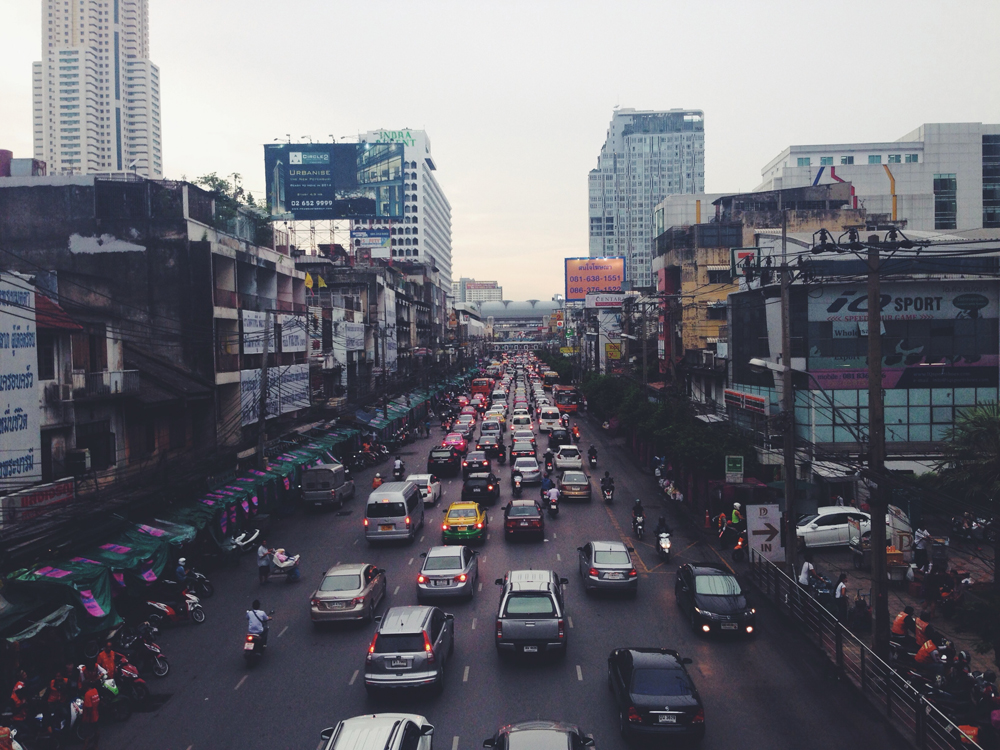
Commuters of the World, Connect
décembre 11, 2012 — reports (fr)
Commuting sucks, and all of us know it. It wastes time, boosts emissions, strains urban infrastructure and creates unbearable levels of stress. Cities have been grappling with the problem for decades, but costly infrastructure investments that streamline traffic can make the problem worse, by attracting even more cars.
Now help is coming — and it’s quick and cheap. A ground-breaking study launched one year ago on the congested freeways around San Jose, California has found commuting is measurably more enjoyable, as well as more efficient, when drivers share information on social apps.
The San Jose pilot project is the brainchild of NewCities, a non-profit Swiss-based think-tank dedicated to building smarter, more sustainable urban environments. Partnering with Swedish technology giant Ericsson, the University of California Berkeley and two of the hottest social networks designed for commuters — Waze and Roadify — NewCities took a close look at exactly how “connected” commutes work. They crunched massive amounts of data from over 100,000 Waze and Roadify users (as well as from “unconnected” folks) and found that drivers who use social apps while commuting describe themselves as happier and less stressed, as well as better able to plan their routes and navigate traffic jams and roadwork. The study is the first time text-sentiment analysis has been deployed to analyze a transport issue, which makes it also an important milestone regarding the power of data generated by social networks.
Social apps for commuters are basically real-time crowdsourcing. Connected commuters get advance warning of roadblocks from others ahead of them on the road, and benefit from suggestions by other drivers for alternative routes they could take. Clearly that cuts down on their travel time (and therefore the pollution they’re creating). And it also reduces the unpredictability of commuting, which is a major cause of stress. But fascinatingly, there’s also another benefit. Connected commuters don’t just benefit from receiving advice — they benefit from giving it. They enjoy the conversational element of the social apps, and they particularly value their ability to help others. Once they’ve benefited from the crowd’s input, they begin sharing information themselves. It makes them feel good.
From a system point of view, text sentiment analysis of apps like Waze and Roadify is a potential goldmine for transportation agencies and local governments, who need more information about commuters’ real-time problems. For example, the report notes that commuters complain more about traffic when they’re heading home, and recommends that local efforts to improve commuting focus on diminishing congestion during the evening, as opposed to the morning, commute. Most of the time solutions to traffic congestion focus on altering the supply and demand of road space : road space rationing (Brazil), car license-plate quotas (China), congestion pricing (Britain) — or routine: just build bigger highways. These solutions, while innovative, are often expensive and have long lead-times.
In the U.S. alone, 75 million commuters waste 34 hours each every year on unnecessary delays.
But the NewCities study indicates that commuters would benefit from a simple increase in information regarding the supply and demand that already exists — and that they’re eager to generate this information themselves at little cost. The potential economic impact of this is huge. In the U.S. alone, 75 million commuters waste 34 hours each every year on unnecessary delays; one study suggests the real cost of this is well over $100 billion. So even a small benefit could swiftly scale up. But perhaps most important is the human element. Connected commutes involve people helping each other. They create a sense of community and sharing. If voice-activated apps can be used safely (for example, using voice input rather than texting), they could vastly transform a huge chunk of each workday. Get connected…
Click here to access the full report on this study.
This article was originally published in the Huffington Post.